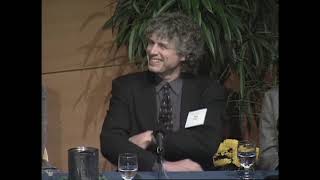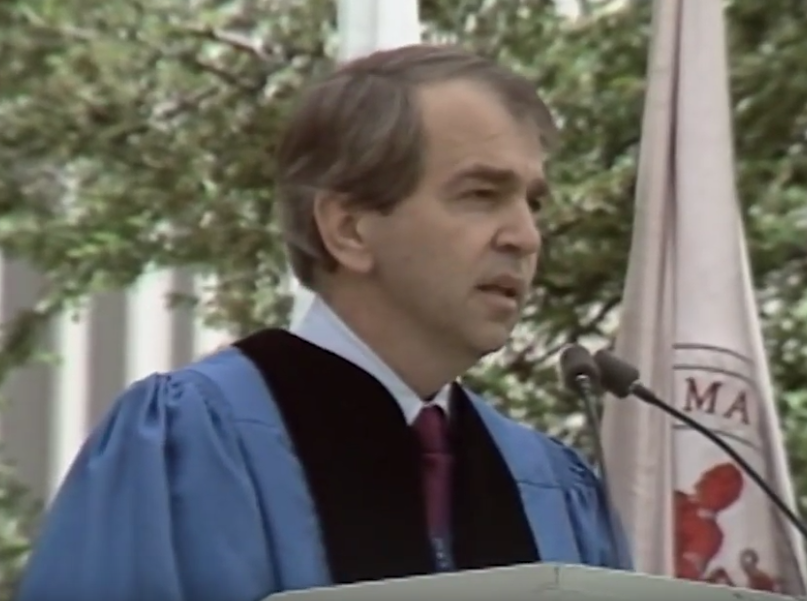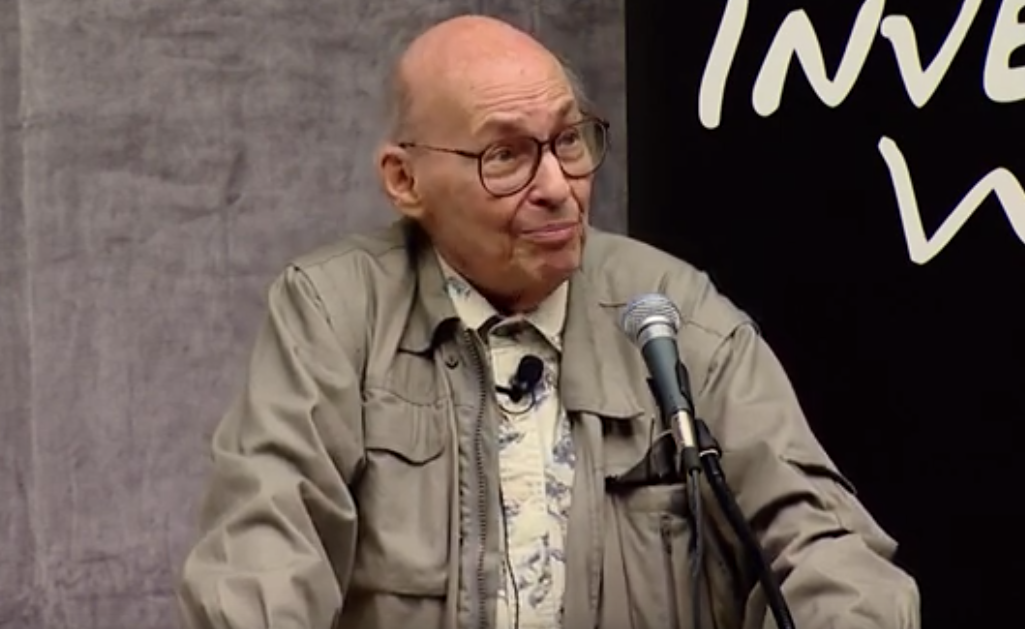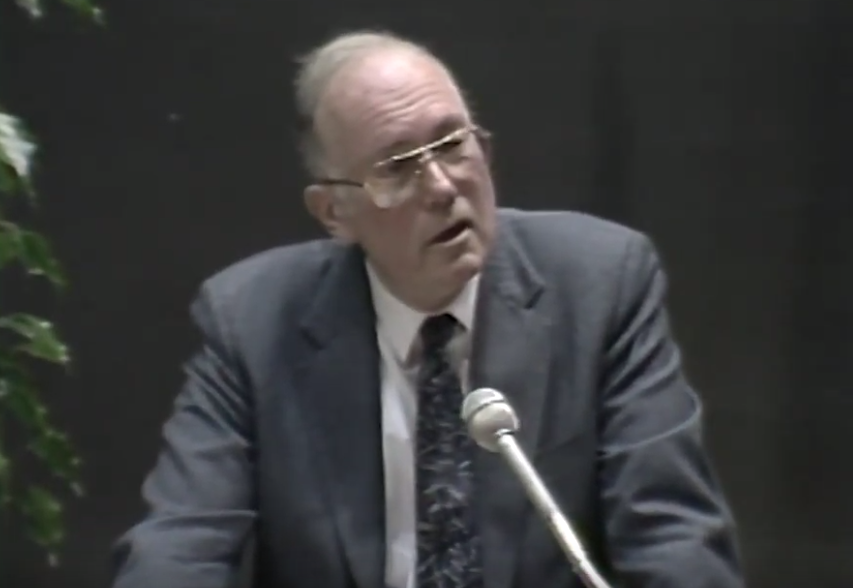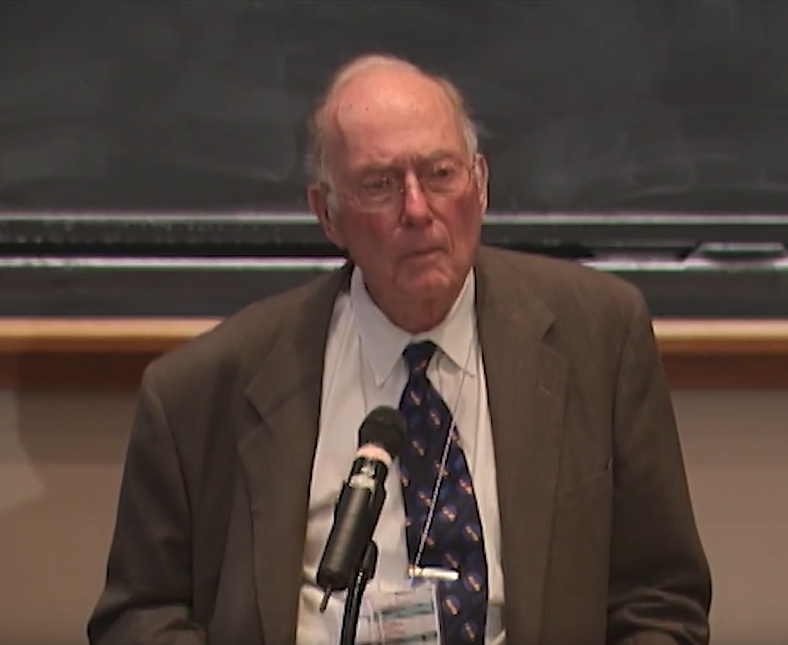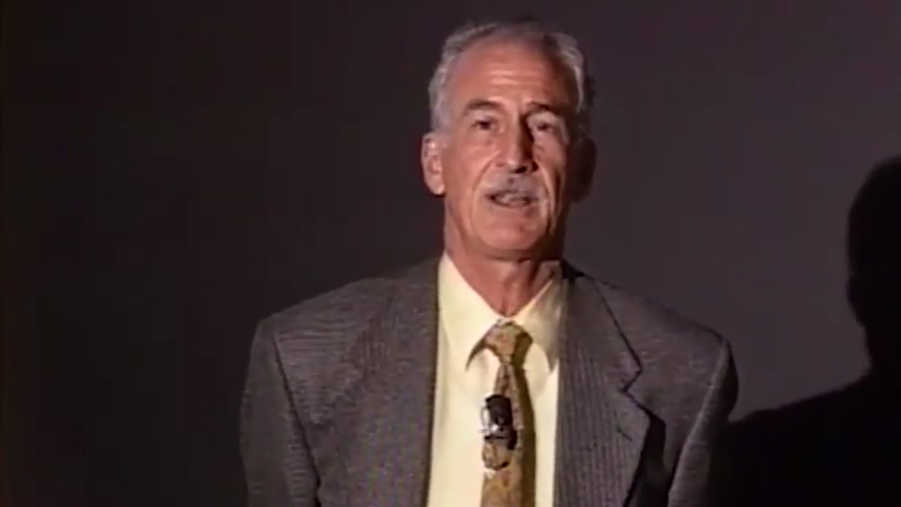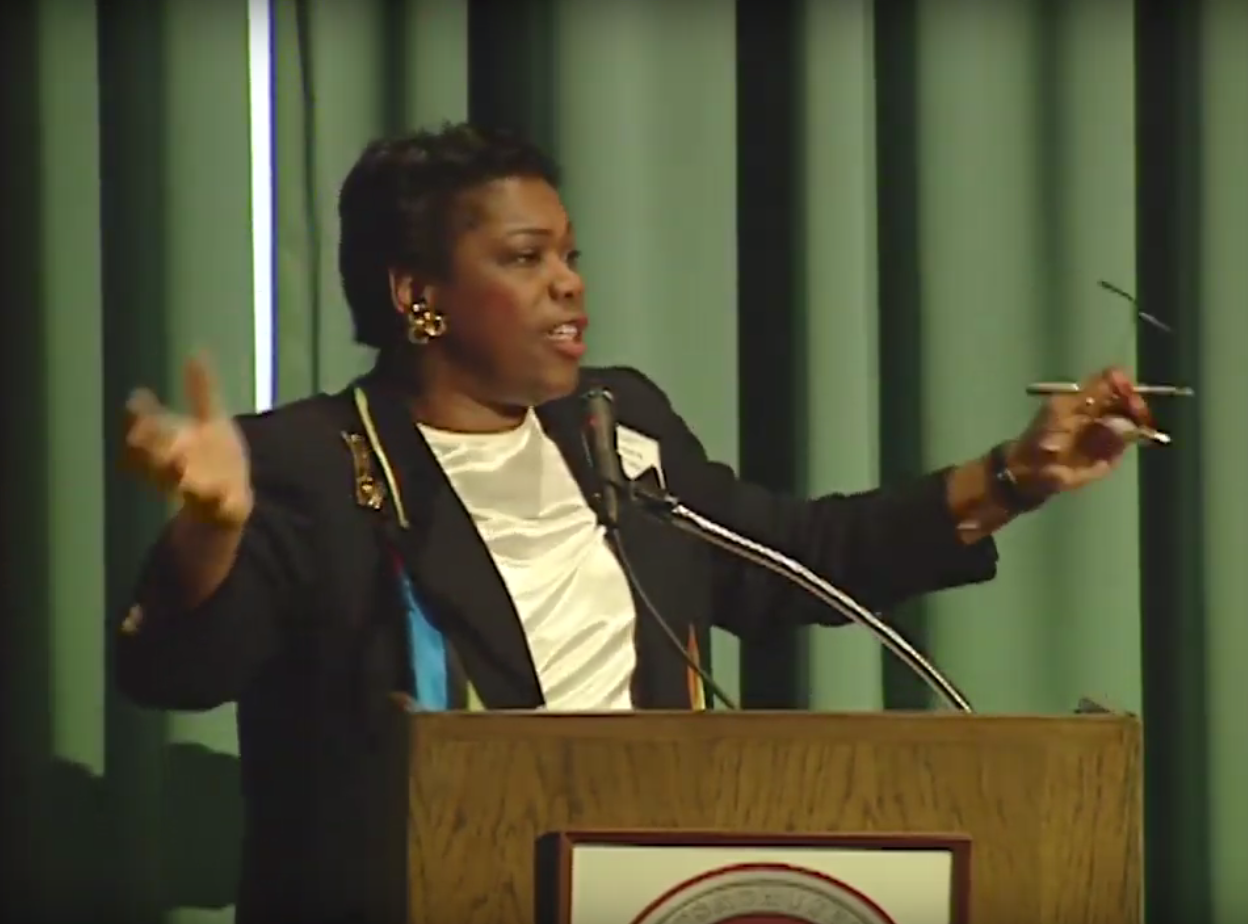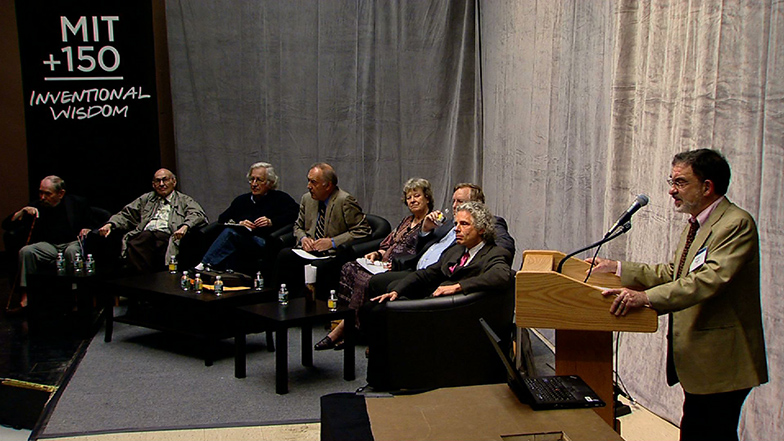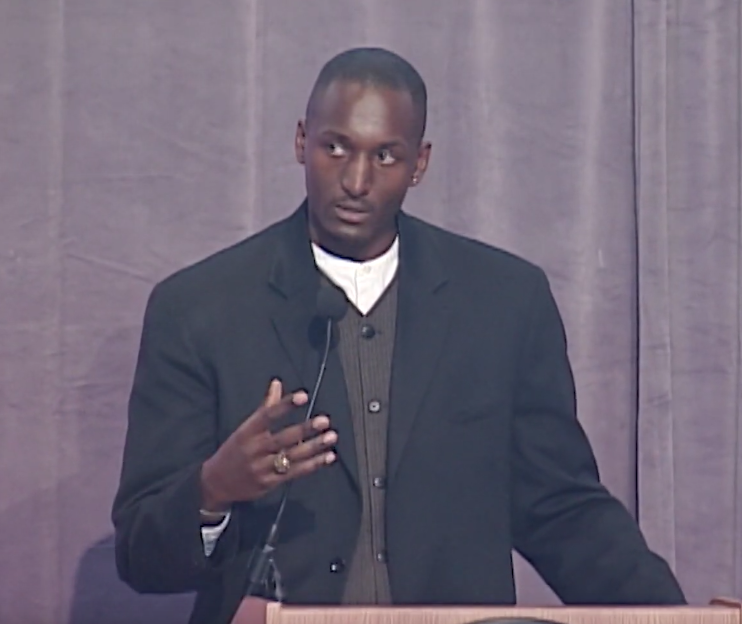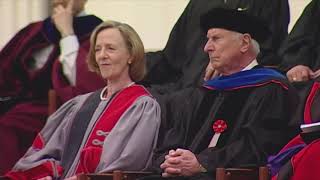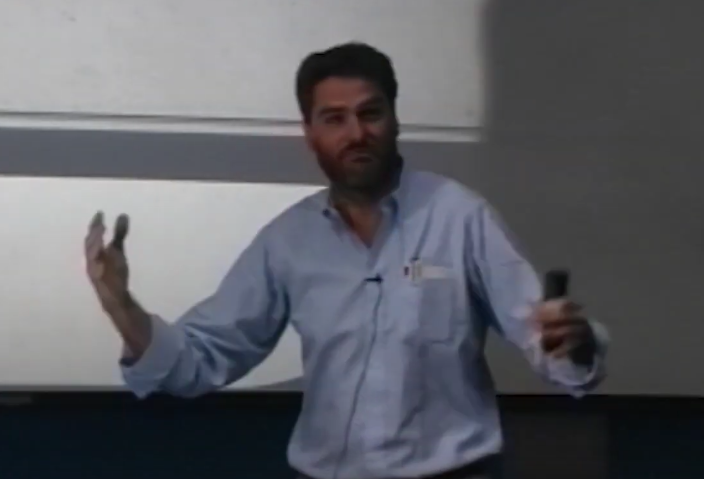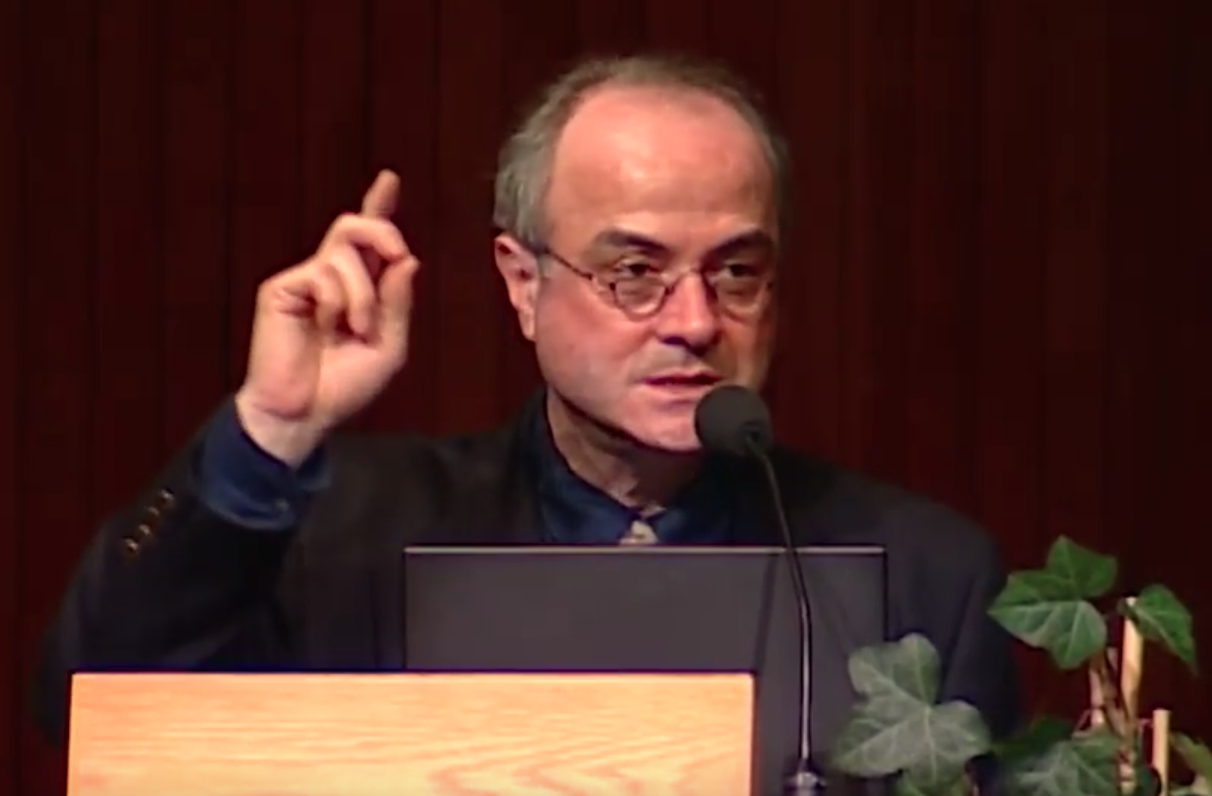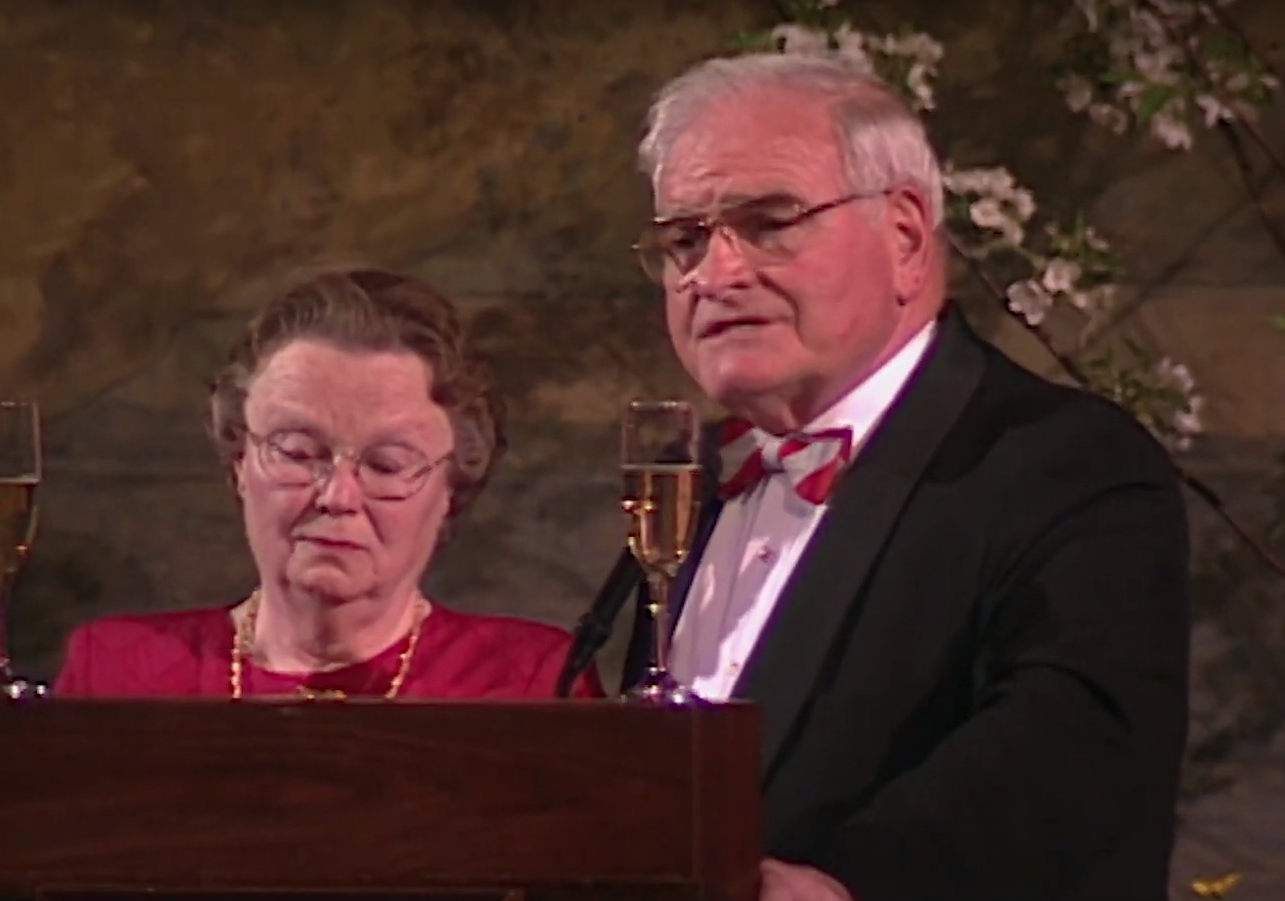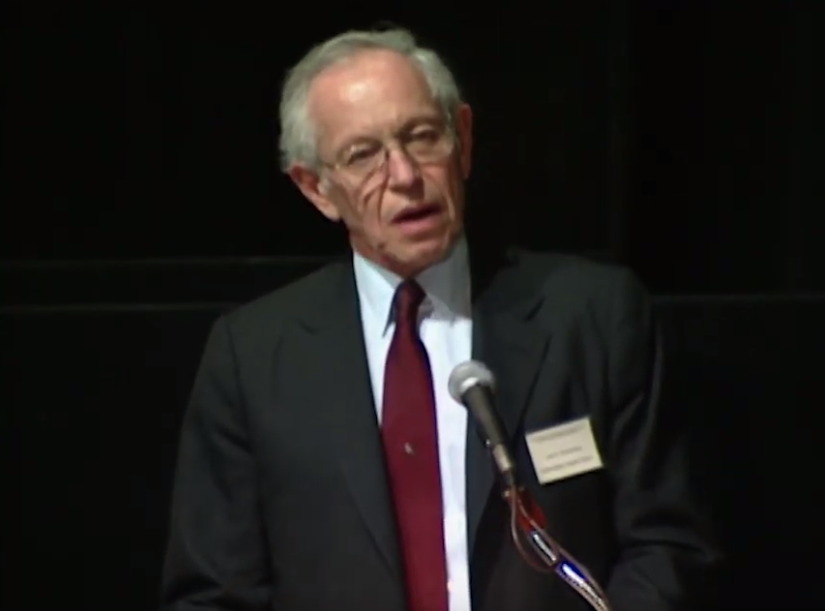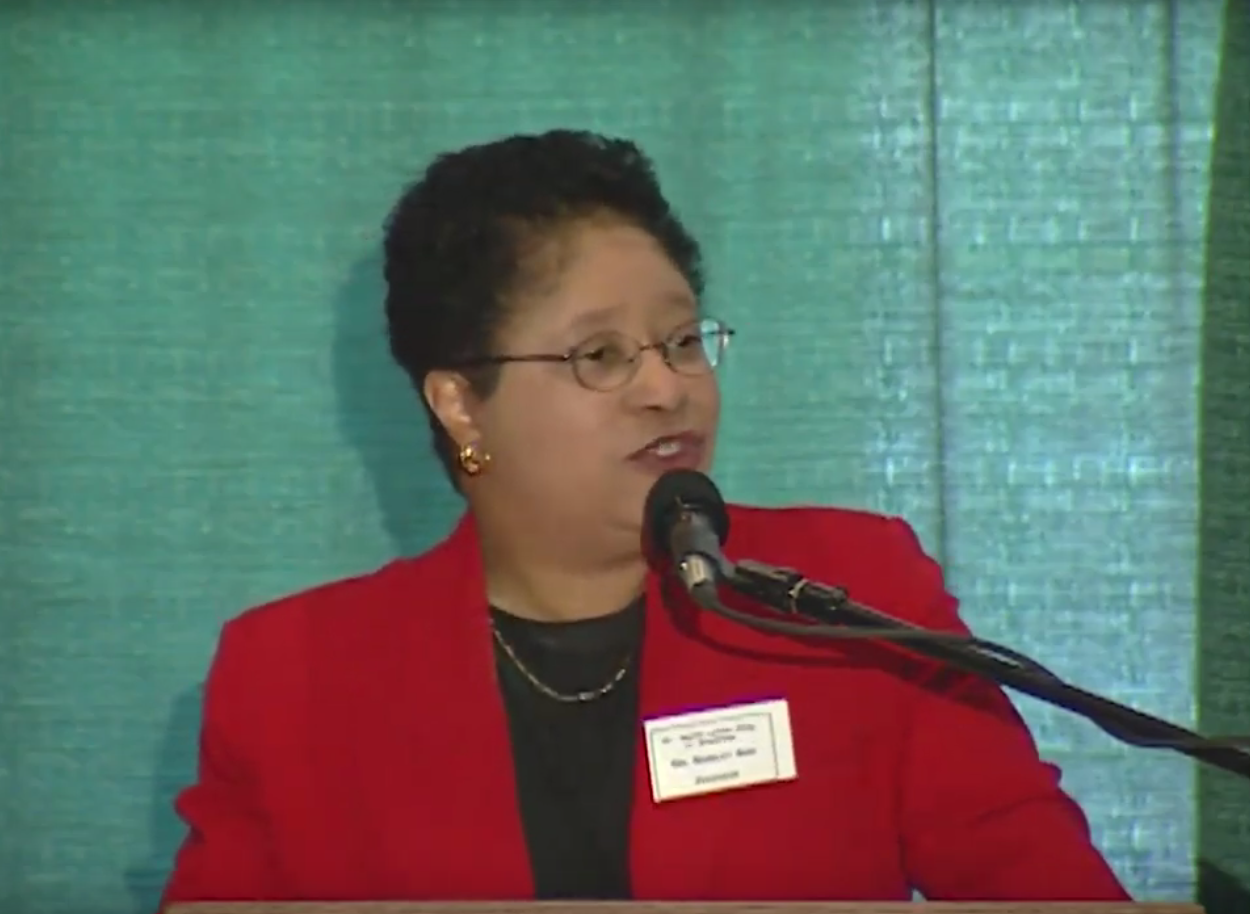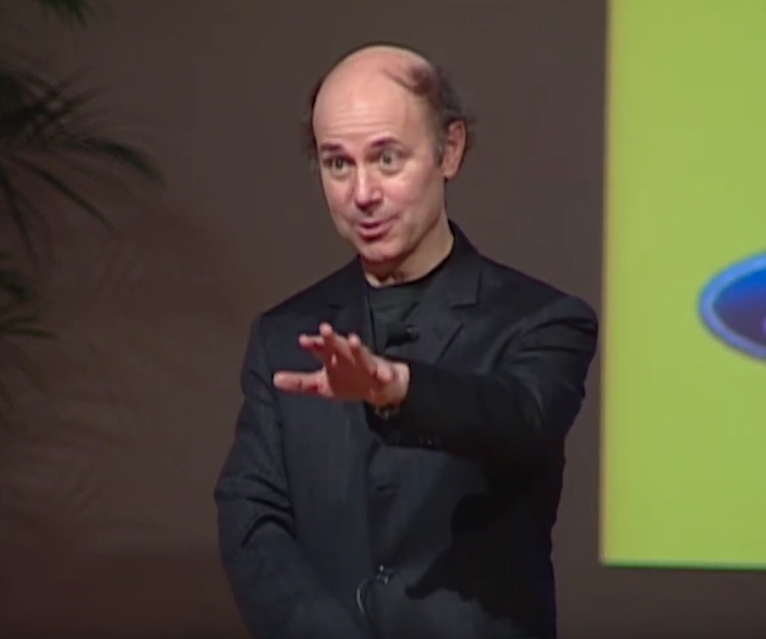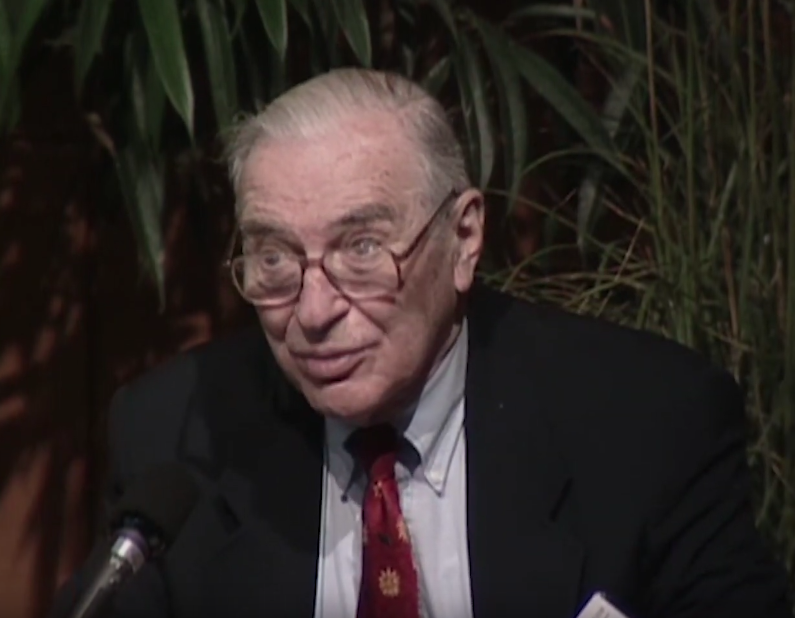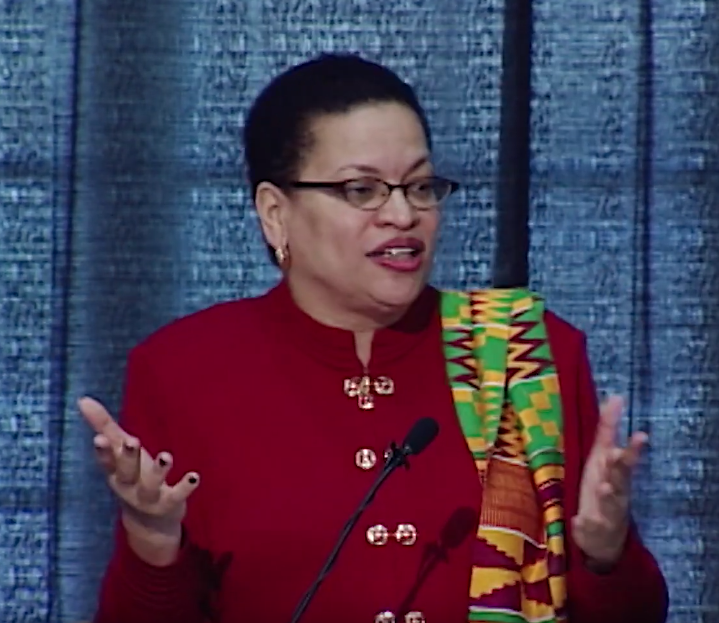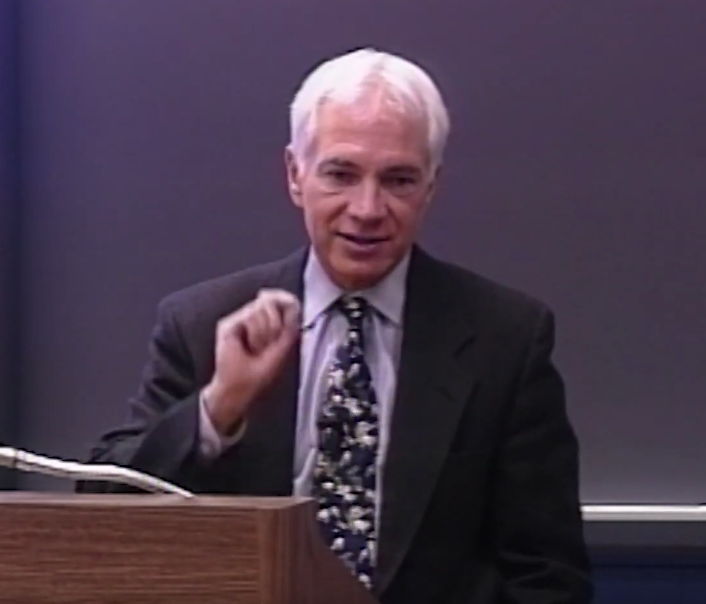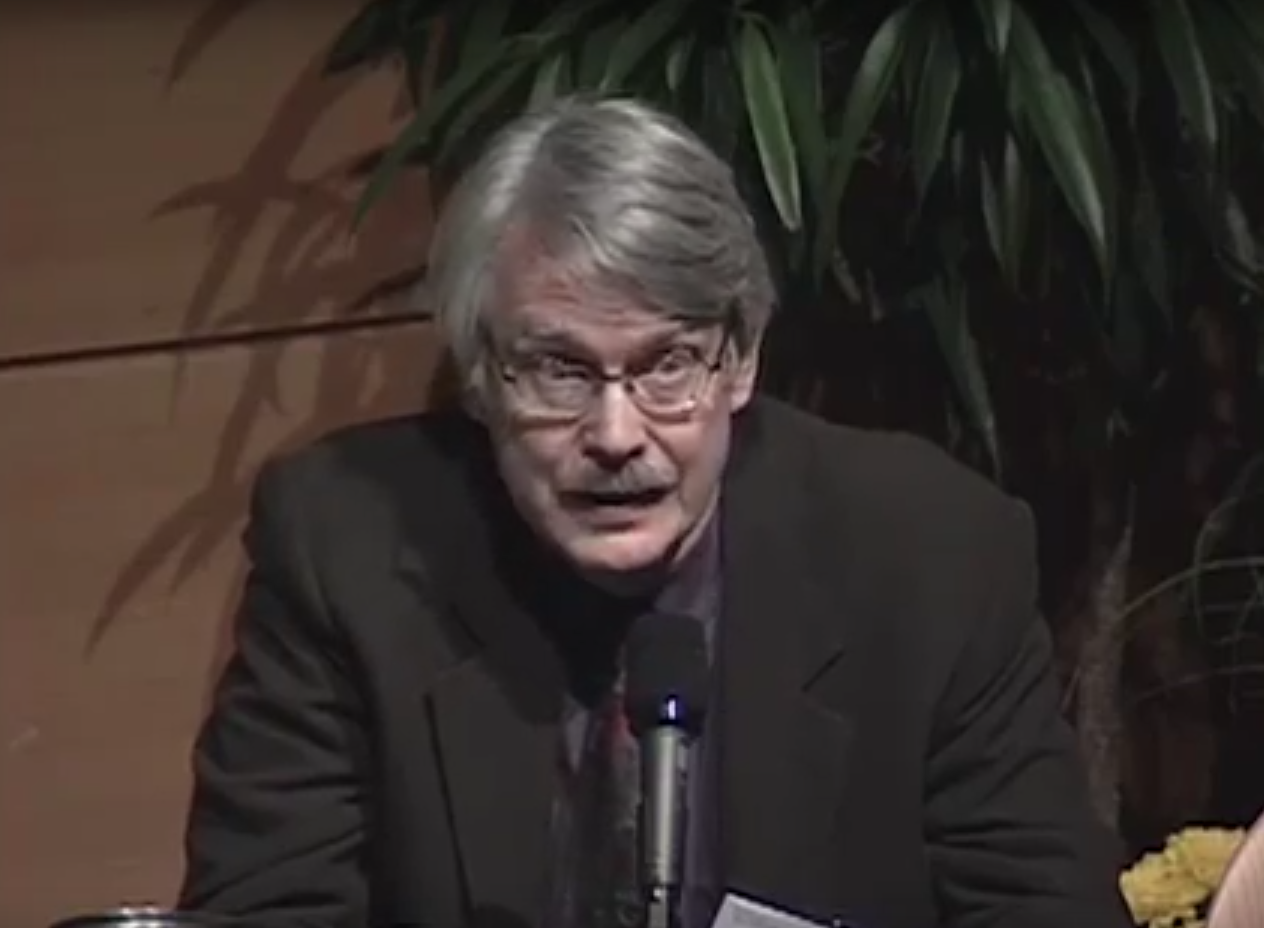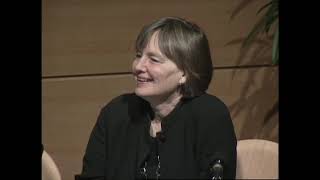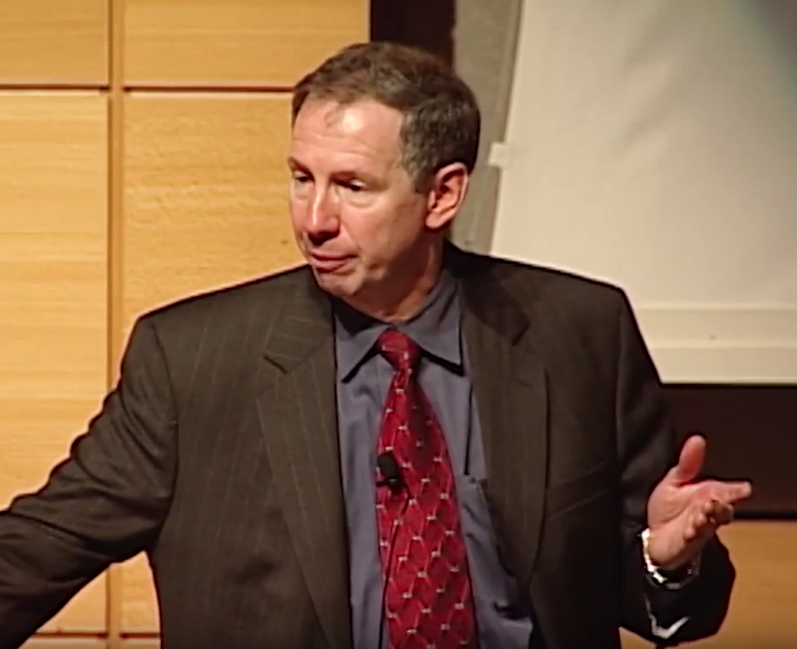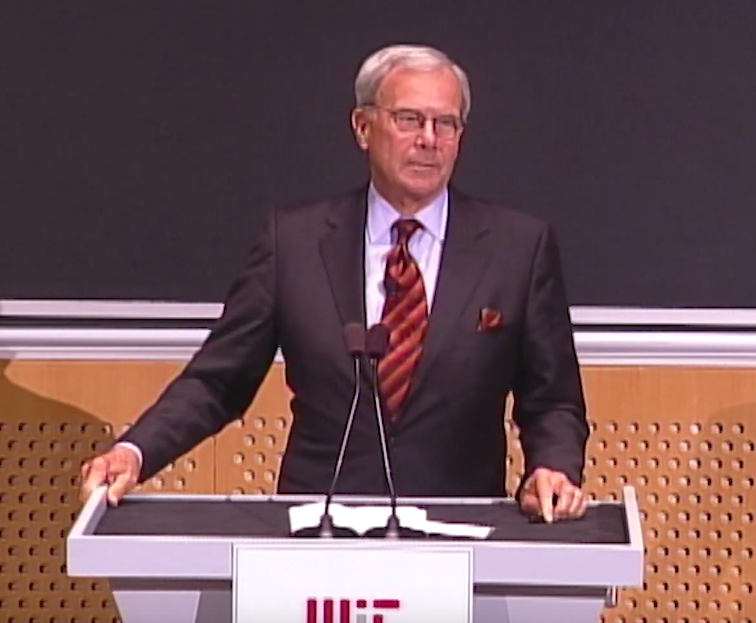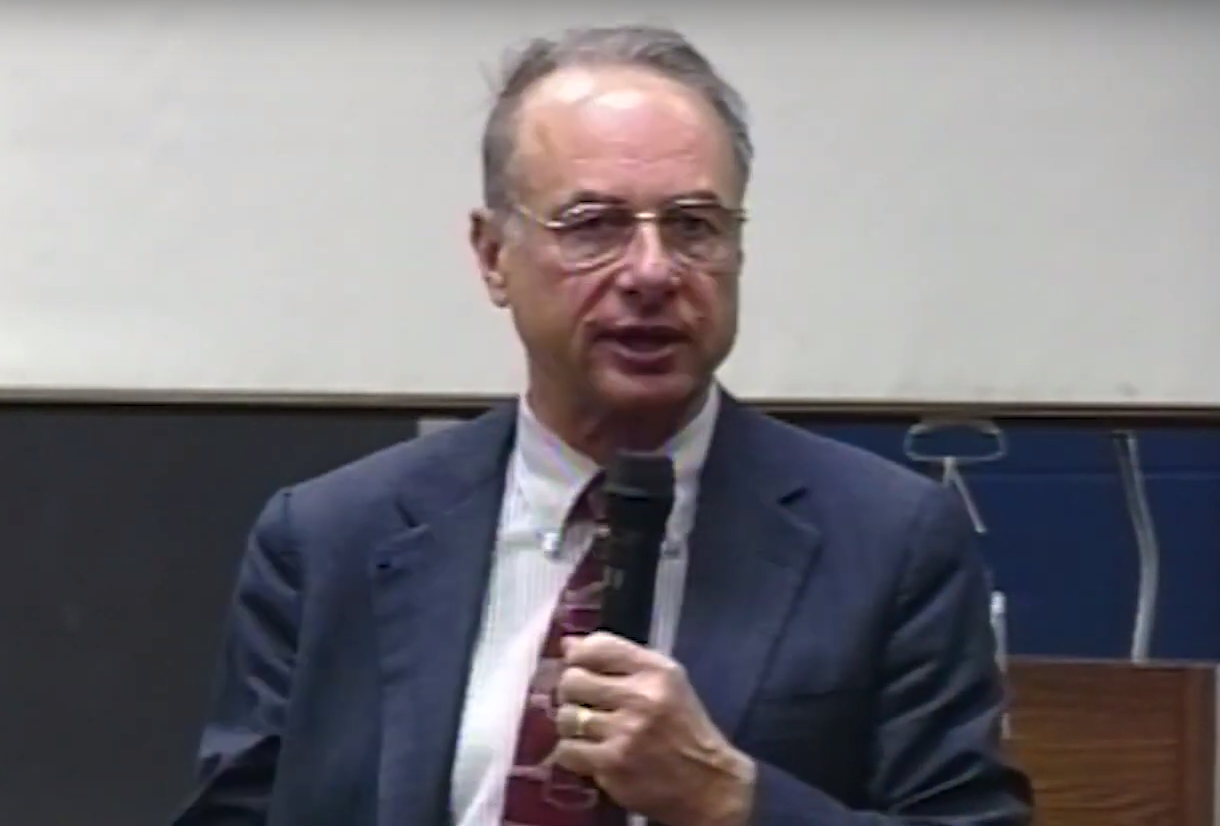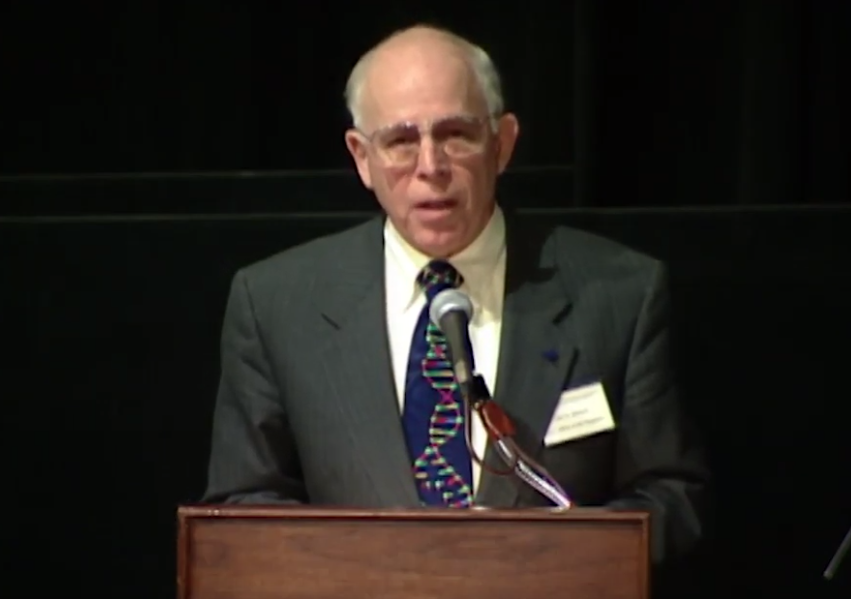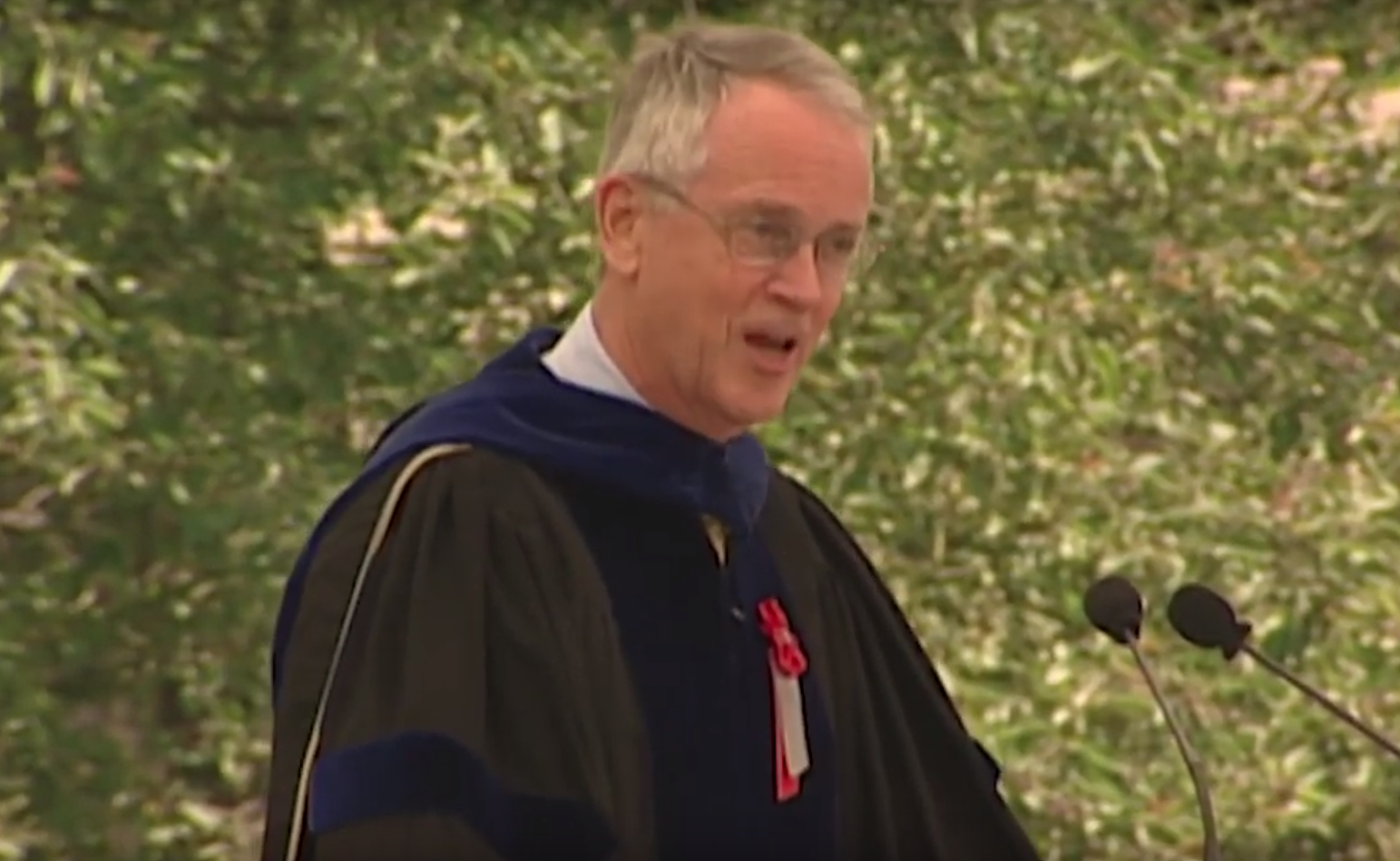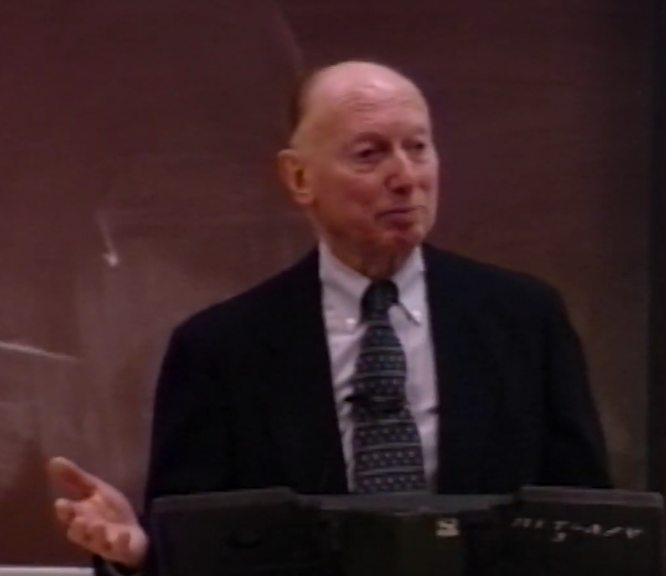15th Annual Killian Award Lecture—Mildred S. Dresselhaus (1987), Lect. 1
PRESENTER: Welcome to the first of the Killian lectures for this year. It's both a special pleasure and a sadness to be introducing the 15th James R. Killian Jr. Faculty Achievement Award recipient-- a special pleasure because Millie Dresselhaus house is the first woman recipient of this faculty award, but a great sadness because Elizabeth Killian is no longer with us to share in this pleasure. Before I introduce Professor Dresselhaus, let me review briefly the history of the Killian award.
In 1923, a young man transferred to MIT from Trinity College, later to be called Duke University. And this young man graduated with the class of 1926 with an SB in business and engineering administration. This student, James R. Killian Jr., went on to spend the greater part of his life at MIT, serving as the tenth president from 1948 to 1959 and as chairman of the corporation from 1959 to 1971. At MIT and nationally, he's been an educational leader and innovator working to strengthen and broaden engineering education.
He laid the foundation on which the current educational reforms now being discussed at the Institute have been able to be built. Together with his enduring and continuing contribution to MIT, Dr. Killian has played major roles outside of MIT. He was the first scientific and technical advisor to a President-- Dwight D. Eisenhower in 1957 to '59. Dr. Killian was also a leader in establishing Public Television and Public Radio, serving as chairman of the board of the Corporation for Public Broadcasting in 1973 and 1974.
These contributions only hint at what this man has done for MIT and for the nation, indeed the world. For these services and for the honor and respect with which Jim Killian's colleagues at MIT regarded him, the Killian award was established by resolution of the MIT faculty in 1971. The resolution is printed at the back of your program.
The Killian Award thus honors two individuals each year-- Jim Killian, true son of MIT, and the recipient of the award. Now it's my great pleasure to introduce Professor Mildred S. Dresselhaus, institute professor-- not quite yet, Millie. You'll have to sit still because this introduction spans a little bit more than that.
This is a typical Millie act. She really wants to get on with things. And those of you who know her will find this one of her endearing traits. Anyway, she is professor of electrical engineering and physics but currently Institute professor at MIT.
Since 1967 when she came to the MIT campus from Lincoln laboratory as a visiting professor, Millie has been an extraordinary presence here and in the nation at large. Her accomplishments are so numerous that even a listing of the highlights would take more time than I have. Just as an example, I opened science last night and I was sort of skimming through.
And I noticed that Millie had been elected to membership of the executive order of the National Academy of Sciences. I'm not in her field, but I could count on reading something equally notable about Millie several times a year, be it the Radcliffe Quarterly or whatever it happens to be that I open. Now, instead of trying, therefore, to review all these accomplishments, I'll just give a personal account of Millie as seen by a fellow woman faculty member.
Milli is a mythical being, a superwoman who has been an outstanding scientist, administrator, spokesperson for her discipline nationally, educator, super teacher, while being a dedicated wife, mother to four children, and to top all that, a fine violinist and participant in chamber music groups. Now, this paragon ought to have been intimidating, tremendously intimidating to other women interested in science and interested in university teaching. The thing about Millie is that she is all this with such naturalness, common sense, cheerfulness.
She's just encouraging. She brings out the best in other people. She doesn't really scare you off. She was, therefore, the perfect person to lead MIT's women faculty in an informal group that met first about 1972 to discuss the special problems and opportunities for women students, faculty, and staff at MIT.
She's continued actively in this role in a period that has seen the number of women faculty increase sixfold and the number of undergraduate women almost as much. That change at MIT is in part due to Millie's example and efforts. Today, however, we focus on Professor Dresselhaus' scientific interest.
She will present the first of two lectures together entitled "New Materials Through Science and New Science Through Materials." Today's lecture is entitled "Adventures in Carbon Research." Now, before however we go on to-- this is one of these shaggy dog stories-- to hear about this from Millie, I want to present the following scroll. The president and faculty of the Massachusetts Institute of Technology have the honor to present the James R. Killian Jr. Faculty Achievement Award to Mildred-- I can't pronounce your middle name, Millie. I'm going to call it S-- Dresselhaus, and to announce her appointment as Killian Award lecturer for the academic year 1986, '87, in recognition of her accomplishments as an accomplished scientist, energetic and joyful teacher, dedicated administrator and loyal colleague, vigorous advocate, and friend.
Through her professional and her personal lives, Dr. Millie Dresselhaus gives distinction to MIT as well as human coherence and purpose. Millie, may I ask you to accept this scroll? Now, Millie, I get a chance to say, here you are, to give your lecture, "Adventures in Carbon Research."
MILLIE DRESSELHAUS: I hope that the microphone is working. Let me know if it isn't. Thank you.
This is the very first Killian lecture where Dr. Killian isn't here. He had an accident. And he's-- but he's recovering and doing well, I understand, and he's attending the lecture through television.
So I was very sad to hear about this accident and thought he would have to miss the whole lecture. I was also very sad when last fall, we heard the passing of Mrs. Killian. As you know, she came with Dr. Killian to each and every lecture. They set up here in the front and she was always so interested in all the activities of the faculty.
She was a gracious and hospitable hostess and particularly interested in women students and faculty. And she would have, I know, enjoyed being here on this occasion. And I decided as a small token to dedicate the lecture series in her honor. I wanted to start out with a very few words about what Kilian award means to me.
Because I suppose to everybody, it means something. But it means something kind of special. Well, I guess it means something special to each and every recipient.
So why should I say it's special to me? But what the whole thing is about to me is that I've been extremely fortunate to have had the opportunity to expand my whole professional life able to do basic research. There are very few people, when they graduate with a degree, that had that opportunity to do wherever their mind leads them.
And that has been wonderful. I've been engaged in solid state research for the last 30 years at a time of tremendous, tremendous excitement. And I say to the students in my class, I think they must be tired of hearing this, any of them that are here to listen to these lectures, that no time in the history of the field has solid state physics been anywhere as exciting as it is now. And it's a great privilege to be able to participate in this great explosion of knowledge, even more of a privilege to teach it, and I'm sure also a privilege for the students to be students at this time-- must be really a wonderful thought to be engaged in this very fast moving, highly interactive field.
When I say this, I also say at the same time, because I know it's true, that almost every field of science is experiencing exactly the same excitement. It comes in different forms, but this is really a wonderful time to be involved in science. I had the privilege the last few months of giving the Phi Beta Kappa award lectures and I've been giving those things around the country. And that's my main message. And my message is mostly to the non-scientists to tell them what exciting things we're doing and perhaps for them to participate as well.
The second honor and privilege is that I've been able to spend almost 30 years, essentially my entire career in science, at MIT. This has really been something totally beyond my expectations as a child and even as a graduate student. I will tell you some anecdotes, how it all happened.
I just stumbled all into it. But I did have a few friends that helped me, particularly Professor [INAUDIBLE], who brought me to MIT in 1960 and George Pratt and Bob [INAUDIBLE], who had a great deal to do to bring me on campus, and Lou [INAUDIBLE], who stuck his neck out for me and made an appointment for me in electrical engineering department. I tried very hard through my career not to embarrass these good friends and do what I could to contribute to life at the Institute.
For all these reasons, winning the Killian Award is something special to me, to my husband, and to my family because we all really did this whole thing together. Our Killian Award lectures, there will be two of them. And I'm sort of dividing things-- who has a pointer? Can't find the pointer, so I'll make one.
The one I was going to talk about today-- the general title is "New Materials Through Science and New Science Through Materials." I think it's fair to say that the great explosion and excitement in solid state physics today comes through new materials. And that's what it's all about. And without the new materials, we can't do the new science. And in fact, the new science always creates new materials.
So that this is an interactive process and that's the thought of this title. And I was thinking-- solid state physics, you know, it is something with so many pieces and parts and it's hard to give a coherent lecture-- hard for me to give a coherent lecture. So I tried to subdivide and focus on something that's been common through my career at the Institute.
And carbon science seems to be one common thing. And I decided to give the first lecture on this. The second will be devoted to modifications of materials by different processes like intercalation, implantation, and rapid laser annealing. So there's some more coming.
So, carbon science-- what's carbon? Here's a periodic table. Everybody has this in freshman chemistry or maybe high school. Here's carbon, element six of the periodic table.
Carbon is one of the most important elements that there is. It's fundamental to life. We can't live without it.
It's fundamental to all the energy industries. It's fundamental to the chemical industry. It's important to geology, important to astrophysics, all kinds of fields-- everybody's interested in carbon-- but also to material science. And it's in this latter sense that I will focus my remarks.
As you know, carbon has two forms. One is stable-- that's graphite. That's my best friend.
I've done some work with diamond. That's my subsidiary friend. This is a metal with very, very few carriers but unusual properties. Diamond's a wide gap semiconductor.
What all of these materials have in common is that they have extreme properties. Carbon is an extreme material-- has the highest melting point, highest modulus. It's the stiffness material. It's the strongest material-- has the highest thermal conductivity, the highest anisotropy in the graphite form, and many other attributes.
I spent about 25 years of my life worrying about carbon and I think I'm not finished. Because every time, something new comes up. How did I get into this field?
Well, I assure you it was not planned. Like everything in my life, I really stumbled into this. And I have a little view graph to help me along on how I stumble.
1960 was a crossroads in my life. I was a postdoc at Cornell and Jean was a faculty member. And there was no job for me.
Those were the years of nepotism. It was very difficult for two people to get jobs in the same place. I know young people today are suffering the same problems in dual career families, so I'm very sympathetic to this. So we have to find a job somewhere. And it was through cyclotron resonance that we got a job at MIT.
Jean had made seminal contributions to semiconductor physics. And the two big names-- there were groups in semiconductor physics-- were University of California Berkeley where Jean came and MIT-- MIT Lincoln labs. Cyclotron resonance was a great breakthrough in semiconductor physics because it allowed, for the first time, an accurate determination of the mass of carriers in semiconductors.
And Lax had the idea that if he got two Dresselhaus' to MIT, that maybe the MIT team would get enough beefing up that they could whip the Berkeley team. As you know, Professor Lax was always very competitive. Unfortunately, I wasn't much of a big gun in this team because my background was in superconductivity.
When I came to MIT, I was-- MIT Lincoln labs-- I was told I could work on almost anything I wanted except for superconductivity. Because that was already a dead field. I really didn't need the events of the last few months to prove this, but it was proved many times over in the last 25 years there was hardly a dead field.
I very politely turned to other things when told that superconductivity was all finished. And that was actually a very good choice. Ben Lax was my best friend.
I think it's always good to switch fields when you're young because then you can learn more than one thing. And that helped me learn something else and I'm very thankful to him for doing that because maybe I'd still be in superconductivity and I wouldn't have a lot of the ideas or knowledge about superconductivity and other things that I have having worked in other fields. So moving around and sometimes suffering from adversity isn't a bad thing in one's career.
So cyclotron resonance basically brought us to MIT. And what-- the big discovery that had been made at MIT about 1957 was that you could extend the concept of cyclotron resonance to study transitions between magnetic energies but band to another-- that is, do interband transitions in a magnetic field. And in that sense, the MIT group was way ahead of the Berkeley group.
And I was invited to join this team to work on the inner band magneto optic effects. That was a very exciting thing to be invited to join that group. And as you see, this involved high magnetic fields and led to my involvement of the activities of the National Magnet Lab before it was the National Magnet Lab.
So that's how I stumbled into MIT and how I stumbled into working on graphite. Let me-- this view graph explains how I got the graphite. The first thing tells you how I got to magneto optics.
Well, already when I came in 1960, when I came to MIT, they were already other people working on semiconductors. I couldn't be doing the same thing as everybody else. So I was charted out a new field to try to do magneto optics in conducting material.
And, well, we didn't go for broke and go to the most conducting material, but we worked our way stepwise from the semiconductors to more conducting material. And some of the criteria were to find materials where large quantum effects could be seen. That is, the separation between magnetic energy levels would be as large as possible.
Now, at the Lincoln Laboratory itself, in those days, we were limited to about 40 kilogals, which wasn't much by today's standards. And that meant pretty much that we had to work with materials with small masses. There were two candidates of this type-- bismuth and graphite. I do something about bismuth because I came out of the University of Chicago, which had a long history of bismuth. And everybody in my lab-- and I was working on superconductivity.
But everybody else was working on bismuth. So I couldn't help but know something about bismuth. And that was a big plus for me. And Jean knew something about graphite.
So between the two of us, we had a pretty good background to enter into this field. Now, I should mention that some of the requirements here to do these experiments-- small masses that determine the materials we were going to use. And we needed large fields because the separation between Landau levels, between these magnetic energy levels, is proportional to magnetic field.
And so about 1960, '61, I start making frequent trips and sort of set up shop here in building 14-- building four, the basement of building four, where the old magnet lab was. Now, this is before the magnet lab was. We ran our own equipment.
We ran the magnets. Everything was in a very primitive state. But that's my recollection of the old days at the magnet lab. And those were exciting days and very interesting things happened.
Well, as I said, one of the things I was assigned to work on was these conducting materials and graphite was one of my candidates. And we started working on graphite, I think, probably in 1961. First thing we tried was small crystals.
The crystals were so small, we couldn't do the magneto optic experiments. They were an utter failure. All the synthetic samples that we tried gave terrible results and it looked as if this thing wouldn't work at all.
But we were lucky. There was a fellow up at General Electric laboratory who discovered how to make a new material. This is highly oriented paralytic graphite.
And he had-- well, basically what he did was he decomposed a hydrocarbon on a surface, got rid of all the constituents by treating everything to high temperatures so only thing that was left was carbon, and then made it into semi single crystal form and actually got it quite crystalline by heating it to 3,600 degrees centigrade-- that's a very high temperature and under pressure. It was not only heated to high temperature, but under pressure. Actually, today a lot of people work on this material, HOPG-- Highly Oriented Pyrolytic Graphite.
But there's nobody making this material today with this degree of perfection. That was the old days when it was all experimental stuff. And I was very lucky he gave me a sample.
And he gave me-- after we got some results, he gave me more samples and we had a very nice collaboration. So that made possible to do the science. So here's the magneto reflection spectrum. And it looks almost like any other magneto reflection spectrum that was seen on a semiconductor except for one feature. So each of these little wiggles here represents the resonant absorption of photons from one magnetic energy level to another. What was different about this was that there were two kinds of series. There's these rapid series and then there's a broad series.
You could see it as a background here and then over here. They're labeled M in the figure. And this is the first time that anybody had seen double kinds of magneto optic transitions.
And what did that all mean? Well, what it meant is that we had transitions not at one point in the Brillouin zone, reciprocal space-- unit cell and reciprocal space. The K point was these regular big transitions.
But we also had an addition-- transitions at the H point. Here are the landau levels. And you see they have extrema here at the K point at the center. But they also have little extrema here at the H point.
And those little extrema gave rise to these broad resonances. Well, this was well and good. And then we worried about collecting a lot of information about this. So we hear many, many resonant transitions taken as a function of magnetic field and photon energy.
But the bottom line was to relate all the data, make something out of it. And we managed to do that. So what we did was we had data relevant to this point in the Brillouin zone and other data relative to this point in the Brillouin zone.
And our goal was to somehow combine all this information and make a model that would give us information for an extended region of the zone. Now, up to this time, nobody had worried about doing anything like this. All treatments of semiconductors were limited to just one point in the Brillouin zone where you had your carriers.
So we were lucky. We were able to do this because the times we're right and theory had progressed to a high level and there was a band model. See, 1960, everything came together and a couple band model between four bands-- you don't have to worry about the details.
But what this enabled us to do was to deal with these complex energy bands and describe the energy band structure for the whole length of the Brillouin zone in terms of seven parameters. And actually, it took us quite a few years to determine all of this because it wasn't one experiment. It was many experiments that made it all happen.
And from this came a model for the energy band structure. So that was what was accomplished. A little anecdote-- I remember what made all of this possible was-- when we started the experiments, we didn't know about this band model.
It had been published, but we just didn't know about it. But McClure was a friend of mine. He was a graduate student at Chicago when I was there. And he had heard that we were doing these experiments.
So he called me up and he said, let's get together and talk about whether what you're doing has any relevance to our theory. It happened just at the time we were doing these experiments that our third child was born. And I remembered him visiting us.
And we had a baby that was about one-month-old. And that was the winter of 1963. And we spent our time together-- he spend several days in our house. And we were rehashing his theory and trying to figure out how to apply our experiments to the interpretation-- the interpretation of our experiments with the theory.
And those were very productive days. And when he left, we figured out what we were going to. Do and that was success.
So from the energy band model came the Fermi surface. Because once you know E versus K, you can figure out where the occupied states and the unoccupied states were. And the occupied and unoccupied states were here along the edges of the Brillouin zone and the more specific shape-- this was an artist's rendition of cross sections that I actually calculated.
But you know in those days, even today, it's hard for people in the arts, whether they're in art or in music, to get jobs. And when I came along with these cross section, there was a man that spent his time making up drawings for people. And that was pretty boring work. But when I came with these cross sections, he was absolutely fascinated by them.
And he dreamt up making up this little model. This model has made many textbooks and I've seen it many places. It has an aesthetic aspect about it that has interested many people, but it wasn't really my work. The calculation was mine, but not the picture. It's a rather nice picture.
Well, we were, of course, interested in all of these cross sections and measuring the major cross section for electrons and holes. And I'll tell you soon that our interpretation of the experiments reversed electrons and holes, those of you who work in graphite recognize that this picture isn't what they know. And I have to tell you how we got picture that they do know.
But in addition to the main cross section, the extremal cross sections which everybody expected, we found in the De Haas-van Alphen effect, we found an additional cross section. And what could that be due to? I will explain that next.
Well, if you look at the extremal cross section, you see a little piece of the Fermi surface protruding over the zone boundary. And then if we translate this piece down below by reciprocal lattice vector, we can join them up and we get this football shaped thing. And that's the minority surface in graphite.
So we could explain this cross section at the zone boundary with that interpretation. We had another interpretation that we like better. This is an interpretation that everybody knows today.
It's in all the textbooks. Everybody uses it. But at the time we did this, it wasn't all that common.
And that was the interpretation of a resonance, a De Haas-van Alphen or magneto oscillatory effect, every time an extremum of a magnetic energy level crosses the Fermi level. So you have-- this makes the main electron orbit. But this one-- main whole orbit in those days.
And these are the minority pockets. You see that they're extremo. And as the magnetic field increases, they'll cross the Fermi level so that those extrema are extrema just like these extrema. So they should show on also De Haas-van Alphen effect.
And indeed, they do. Now, some of these-- yes, I should point out this was a little bit of a historical event. This is the first graduate student in the Dresselhaus tradition-- Sam Williamson, 1965.
I only supervise about 10% of his thesis. It was just a small beginning. Sy Foner did about three times as much and the official adviser was Robin Smith, who was a professor at MIT. Some of the findings of this work, including the concept of the what of the magneto oscillatory effect had to do with Landau levels passing through Fermi levels and that sort of thing was interesting to people.
And so I got invited to give a number of lectures in the course-- in the solid state course. Now, the solid state course in those days was taught to engineering students predominantly. And electrical engineering students were very interested in solid state physics.
And I got invited, as a frequent visitor, to participate in the solid state physics class. Professor Pratt used to invite me and I was very thankful for those invitations. So that led to the beginning of a long tradition of teaching solid state at MIT.
And as I look back over the years, I've had something over 40 Ph.D. students. And one of the things I'm very proud about in my career is the students that have come out of the group and wonderful things that they've done later on. But another thing that I'm very proud of is the something like 500 students I've taught solid state physics to.
I'm not sure if that's the right number. I did a rough order of magnitude calculation that comes out something like that. And some of the names-- I don't remember all their names, but I remember many of their names. And as you go through physical review or a journal of applied physics or this and that, those people, they keep popping up.
And they're all doing-- many of them are doing very, very exciting things-- not only my graduate students, but the students that I taught solid state physics to. And I feel that that's been a big part of my life at MIT is teaching all these people. Now, as you well know, MIT is pretty unique in what we do about our solid state program.
And back in the old days, it was the electrical engineering students that had a very large cross section for solid state physics. They were very enthusiastic about learning it and they were very well trained in physics. So it was easy to teach them.
But what happened over the years is that students have broadened and they learned many, many things-- not only physics, but computer science or whatever. And so when they come to start graduate work, they have very small background now in physics so. Teaching students coming out of engineering backgrounds has become a kind of different ball of wax than it was in the old days.
And I say that for the last 10 years of my career, I put a lot of time and effort and thought into making solid state physics accessible to students with relatively small amount of physics background. And I feel that we have done something quite successful in this area. I think that this has been a really important part of my contribution to MIT.
As I look around the country and I see other schools, there have been a few schools that have been as successful as MIT in teaching solid state physics to engineering students. Now, one of the things that we all know is that as the field of materials researcher and devices grows, you need more and more physics background to be at the forefront. And so it's really to our credit at MIT that we are not giving in. So when the students have less training, we just roll up our sleeves and give them the training that they need to do whatever work they have to do.
Well, the concept of going back to physics-- the concept of symmetry, the role of symmetry in trying to deal with energy band structures, we had demonstrated how that works for graphite. And the next thing we tried was to see could this be extended to other things. And sure enough, it could be. We tried this.
Here's an extension. This was done, when we were both still at Lincoln labs to silicon and germanium. Same concept-- experiments, valence band experiments, would be at the gamma point. For germanium, say, conduction band experiments at the L point, optical properties for many points in the zone, lots of different information coming from different places. Could this all be melded together into a band structure just using symmetry and nothing else?
The answer is it could be and we worked it out for the diamond lattice and applications. And this is the calculated dielectric functions epsilon 1 and epsilon 2 of omega. And the [INAUDIBLE] experiment is really pretty good. Now, this is work that was-- we thought was pretty interesting.
It's appreciated today, but at the time we came out with it, it was hardly appreciated. This was the time of pseudopotentials and nobody was thinking of symmetry. So this work with largely unnoticed until, say, a few years ago, when super lattices came in and other people started using this.
It was about this time in my research career that I left Lincoln and came to MIT. You notice that paper was 1967 and that was the transition point. Why did I come to-- what moved me to the Institute? It was really a bunch of complex reasons. One of the main reasons had to do with the rules and regulations of Lincoln. Sometimes when you have a diversity, it works into good fortune. So this is the case of adversity.
1967, we had four children. The youngest was about two years old. The oldest was less than five years older than the youngest and life was pretty hectic.
The rules and regulations that Lincoln required us to be in the laboratory 8:30 in the morning-- well, it was extremely difficult every day to get a babysitter in at that time and get everything organized and be at the lab at 8:30. And we just weren't able to do this. So we have a lot of hassle.
Now before, years before, the rules and regulations still applied, but we had Ben Lax, who was very benevolent man. I almost said benevolent despot. He had our best wishes in mind, but he liked to know what we were doing. So that was where the despot came in.
Anyway, there were these regulations that we had to punch our time clocks at 8:30. And that made it pretty difficult for me. There were two women at the lab-- myself and Laura Roth. She had exactly the same difficulty and she couldn't take it.
About 1966, she had enough and she left for Tufts University. And I think I lasted one more year. And then I couldn't take it.
And some of my friends invited me down to MIT as a year off as a visiting professor. George Pratt, Ben Lax, Bob [INAUDIBLE] number of the people that I mentioned before, invited me down. I spent the year here as a visiting professor and I never went back to Lincoln lab. So that was the transition.
I was already here to some degree because I was working at the magnet lab. It wasn't that big a transition, but it was nevertheless something of a transition. Much of the work that was going on kept going on. This was a series of experiments that we started about in 1964. And this was work with operation [INAUDIBLE], Professor [INAUDIBLE], who is a genius, in my opinion-- an extremely creative and brilliant scientist.
And he had the idea that we should try to do some spectroscopy, solid state spectroscopy, with the lasers. So he and Paul Schroeder designed and built a neon gas laser that would go out to a rather long wavelength-- today, it's not long wavelengths, but in those days, it was long wavelengths-- and would be capable of putting out circular polarized light. See, for this experiment we needed right and left circularly polarized light.
We didn't have it with the old set up. It was difficult with the intensities needed to produce that. And with the laser, we were able to get this kind of intensity.
And this was really is intended to be an innocent experiment. It didn't turn out to be so innocent, but it was intended to be innocent. And the very first thing that showed up after we got results-- and that was about three years after the start of the experiment.
And the first results proved it conclusively that the Landau level spacing, that the magnetic energy level spacing and the valence band, was less than that in the conduction band. Now, that doesn't sound very interesting. But the implications of that is that the band structure that everybody had been using for eons up until that point could certainly not be right and had to be turned upside down to get this one.
This is the one everybody today knows. But we had to make that transition. When we sent that paper into Phys Rev Letters for publication, we got a very friendly response but very firm rejection.
The paper was refereed by friends so that the comments weren't caustic as they usually are for Phys Rev Letters. But rather, what it said is here are some able scientists-- Alecia Vaughn and myself. What are we doing ruining our careers coming up with nonsense results that are sure to be wrong?
We have nice careers. Let's not ruin them. But we were pretty sure that we were right.
And we said that we wanted to publish and we would take the risk of ruining our careers. So here's the spectrum with two different polarizations. And you could see lines here.
And the indices go up going from the valence of conduction band. And with this polarization, they go down. So it's clear that one can tell whether the spacing of the Landau levels in the valence and conduction band is bigger or smaller. And we use that fact to turn the energy bands upside down. Now, we knew we were right for other reasons-- that this whole thing made physics sense.
For example, if you have a Brillouin zone and you take a Fermi surface that has the same volume and you superimpose them, then the electrons will clearly go in this spot and the holes will go here. Now, anybody that's taken a solid state courts from me learns this. I'm sure you've-- all the students that have had courses from me know that picture.
And the origin of that picture was graphite. Until that time, I think this was not in the textbooks and people didn't think about things this way. But this was the obvious physics of why our solution had to be the right one.
It also explained a host of other experiments. So that was all very fine. Some of the experiments that it explained was cylotron resonance.
Now, this spectrum had been around-- Bell Labs spectrum, no less, had been around for 15 now, 14 years, 12 years-- a along time, more than the decade unexplained. And we were able to explain what the resonances were, each of the harmonics. And turning the bands upside down explained another bunch of experiments that were in the books and nobody understood what the reasons for it was.
Now, when you when you come out and publish an unpopular paper and you finally get it in print, I've experienced this a number of times in my career. Once it comes in print, things come out of the woodwork. All these other guys that had similar results that they couldn't explain, they put them in their drawers. But then when you come out with the answer that they're happy with, it's all fine and they publish.
So that was our experience on this occasion. There were lots of experiments that we didn't know about that were explained by the new bands. And so all was well.
Another thing we were able to do with this is that there were a bunch of forbidden transitions, the selection rules delta n equals 1. And you notice here a bunch of transitions that are forbidden but don't obey that selection rule. And that allowed it allowed us to calculate the trigonal warping which determines the warping on the Fermi surface that I already showed.
Now, lots of experiments have occurred since that time on trigonal warping in graphite. But luckily, the number we came out on that first attempt has withstood the test of time. It stayed pretty much at that value for a long time.
Now I have a switch in topic. And now I'm going to talk about some of our engineering work. And how did I get from carbon science to engineering?
Let me tell you. Between the last viewgraph and here elapse almost a decade, many years. That first bit of work was done in the '60s and now we're into the '70s. In the meantime, I had worked on magnetic semiconductors, on intercalation compounds, and lots of things.
And in the mid '70s, we had an energy crisis. And many people were wondering what they could do to contribute to the energy solution of the energy crisis. And, well, many people switched fields.
We didn't do that. What we did was think what we know how to do, what we already know, could contribute to technology. And carbon science is certainly important because, as you know, some of the things that came out of our interest in the graphitization process is making better fibers and characterizing them.
And with carbon fibers, you could make strong materials with light weight. And of course, that saves a lot of fuel. So that contributes to saving energy. So that was our thought of contributing to the energy crisis. Also, about in the mid '70s, the students changed. And they were getting away pure science and they wanted more engineering.
So I had to respond. I was a member of the electrical engineering department. If the students wanted more engineering, I have to give them more engineering, which meant that I have to work in engineering.
And so we converted a good part of our program into working in the engineering field. Now, this is just a picture of graphite is formed. You start out with building blocks that have very short range order. These basic building blocks then coagulate.
And eventually, little sheets are made with short-- well, not very long range order. And there's no border between the layers. They're turbostratic. And then finally at high temperatures-- about 2,220, 2,300-- we get sheets that are something like graphite.
Almost everything that I'm going to say in the next few minutes, concluding few minutes, have to do with applications on the graphitization process. We decided one area we would like to work on is carbon fibers. And I will tell you in a minute how we got into carbon fibers. Let me just say with carbon fibers are in case you're not familiar with them.
There are various kinds of carbon fibers. Carbon fibers are really very small things. They're thinner than a human hair.
Human hair is about 70 microns. Carbon fiber is about 10 microns. So they're really very, very small things. And they're very, very strong.
And that's what's good about them. They're very stiff and they're very strong. Now, our contribution to the field has been in terms of the high crystallinity.
That's where we've been active. We introduced some new characterization techniques, not really so new. It's not new in that anybody could have done this.
But I guess we were the first ones to do it on fibers. And then it caught on like wildfire and everybody's doing it. Some of the techniques that we're working on now is more sophisticated things.
But those are so new, I'm not going to say much about them. They're current work. But from the fibers came some new science.
I have a few things to say about it. But much of that science is sort of engineering. And having done all of this, we have some contribution to new technology so that the cycle goes on and on.
I think more Morris Cohen is one that has the inventor of the cycle, of this material cycle. And this is all part of the material cycle in the Morris Cohen sense. Well, how does the Raman scattering work as a characterization tool?
The concept is really simple. In a solid, the atoms vibrate in irregular way. If you have a fully crystalline solid, then there are lattice modes. Graphite is a crystalline solid, so it has lattice modes. And they're given by this picture.
Now, because the wavelength of light is very, very long compared to the distance between atoms in a crystal, then in reciprocal space, the weight vector associated with light is minuscule compared to Brillouin zone dimensions so that the phonon frequencies are basically-- the allowed first order phonon frequencies are at the zone's center. However, if you have a disordered material like a carbon fiber, then you get contributions from other phonons and you get contributions from those parts, phonon regions, density of states, where you have a lot by phonons having the same energy. Here's one, the maximum here, and here's another one.
And those are the ones that show up. And it turns out that those particular modes, I put them in green, have a high electron phonon coupling. So we see them.
So anyway, here is a disordered mode and here's another little one. And by measuring the relative intensity of these disorder induced modes that wouldn't be there if we had a perfect material, we have a way of characterizing the perfection of a carbon. And a fiber is an example of this.
Well, we had been working with Raman scattering and magnetic semiconductors. And one day, a student, an African student, came in. That's how we got into carbon fibers. It was through an African student who had been at MIT for a number of years.
His name was [INAUDIBLE]. He'd been at MIT for a number of years, was making very poor progress. And he found me at one point.
And he says, I've got to get a degree. I've got to finish. And I have to learn something that I can use in Africa.
So, you know, those were pretty high requirements. Magnetic semiconductors didn't seem like the thing and magneto optics with high fields and low temperature. That didn't seem like the thing. So I thought of this carbon fiber idea for him.
So his thesis was applying Raman scattering to characterize carbon fibers. And my idea was once he got back to Africa, we'd send him some carbon fibers and he would measure conductivity and simple things. And he could do some research in the environment of Africa.
So that's how we got into carbon fibers-- an interesting story. Well, we made just a small amount of progress. This student did a thesis and we presented the results at a conference, carbon conference.
And present at carbon conference was Professor Endo. And he saw what we were doing characterizing carbon fibers and he was fascinated by this. And he says, we have some very state of the art vapor grown fibers, very terrific fibers.
But we don't know how to characterize them. We'd like to give you some fibers. So we were able to get, for the first time in this country and the next time I think was several years later, we have these carbon fibers.
So this little gift of god with this African student brought me into this new field. And so we started working on carbon fibers. Well, actually, when you heat treat these things, you can make them almost like single crystals.
And here's a transmission electron microscopy picture of one of these vapor-grown fibers. And these are the lattice planes separated by 3 and 1/2 angstroms. And it's really quite wonderful. Once we were able to accomplish that, we decided, well, that's a nice engineering project.
We could mess up this lattice and see how it regrows. So we got into the business of ion implantation. And then, well, we could vary all the different things that you can vary in implantation-- the species, the energy, the fluence, et cetera-- and then nail the samples varying the temperature, the time, and do material science on this.
Now, one of the motivations was at this time, we got the ion implanter at MIT. And I was trying desperately to get the people in material science to use it. And I wasn't getting too many nibbles. So I decided that if I used it myself on a material science project, maybe I'd get some interest.
So I did. I think it did stimulate some interest-- at least I hope. So what we did-- this is the sort of thing that you can do with-- this is engineering, but it has quite a bit of science in it. So here's a carbon fiber about 10 microns.
And if you implant it with something, then you could make this side implanted-- so disordered. And the back side where the implant didn't go is ordered. So we always have a comparison on the same fiber that was very useful.
And when you mess up a lattice something awful-- but you could measure on this how much length is coherent in the A direction and how much length is coherent direction. And you measure this is a function of temperature of annealing and time of annealing, you could learn something. Doing it as a function of temperature, you can do an Arrhenius plot.
And that gives you activation energy, how much energy it takes to move atoms in the A direction and the C direction to graphitize something. And that was interesting and it hadn't been done before. And then you could do some kinetics to find out what mechanism is and you find out that it's the diffusion control mechanism in plane goes like 2 to the 1/2 power as you expect. But across the planes, it's something different.
That was also interesting. Well, some of the other things that we did-- and I'm going to move through these things pretty quickly-- is photo connectivity. This was a serendipitous discovery.
We were studying liquid carbon. And we were trying to find out if liquid carbon is more conducting or less conducting than graphite. And, well, we were doing this by zapping a carbon fiber. Because then you can measure connectivity. That was the whole idea of that.
Well, instead of measuring the conductivity, we got photo conductivity. And, well, that was not what we were looking for. But photo conductivity in fibers is pretty interesting stuff because fibers are conducting.
You think of photo conductivity in insulators. But here's something that's conducting and has photo conductivity. Now, the good part about it is that you could use this method to characterize, since the photo conductivity is in disordered fibers much more than it is in ordered fibers, it's a way of measuring disorder.
And we're trying to understand how we can correlate this with mechanical properties and do something in the engineering area. Some physics that can be done with these fibers is I've been teaching in solid state physics for many years that at low temperature, the resistivity, you subtract out the background residual resistance, the temperature dependence goes like T to the fifth. This Bloch-Gruneisen relation, we've been teaching that in solid state courses for a long time.
It's never been observed experimentally to my knowledge. But we teach it anyway religiously. And at high temperature, there's this linear relation that everybody sees. That's not unusual.
But with these fibers, you can actually make a very accurate measurement at low temperature what the temperature dependence is. And it works well in intercolated fibers. And down to low temperature, it's linear.
But that's a two dimensional system. So Bloch-Gruneisen might still be right, but I'm not sure how right it is. New technology-- I hope that there's somebody from plasma physics here. Because this is one of the interesting areas for this particular application of carbon fibers. I suggested to somebody that because these carbon fibers can be made so perfect that maybe you could use them in a neutron environment because they would be radiation hard.
I made that suggestion to some people at GI Technology where they do these kinds of measurements. And they took the fibers that I gave them and they tried them out in the reactor at Oak Ridge. And low and behold, it really worked out that it was almost no shrinkage of these highly graphitic materials, that crystalline order prevents shrinkage.
So that that's a good thing. Because for [INAUDIBLE], et cetera, you want to align them with low Z materials that will be radiation resistant. And so the second concept is to put this together with some kind of graphitizing matrix.
And, well, in carbon science, we have these kinds of things. This is basically the same kind of stuff that makes pitch fibers. And you can grind it up and use it as a matrix material. And that's the sort of thing that we're doing now. We're running some tests that we have succeeded with the help of these friends at GA technology making matrices that-- and fibers in them that from Raman's scattering as a characterization tool look very favorable.
This is just an endofiber, a vapor grown fiber, that has essentially no background. But this is a pitch fiber that's in one of these matrices that's heat treated not even to the highest temperature. And it's really highly graphitic.
And we're going to try some tests on this pretty soon in a reactor to see how it reacts under intense neutron irradiation. This might be used-- we have it set up like little tiles so that it could be put in a reactor. So that's one of the side benefits.
Well, my final comment-- we'll get back to science. That was enough for engineering. We'll get back to science.
And I stumbled on this thing. This is anomalous magneto resistance at very high fields. I stumbled on this because I'm not a quitter.
I went to an international conference in Japan. This was 1981. And the very, very last paper-- usually, they leave the very last paper something not so interesting.
Very few people left in the audience, but I was there right until the end. And it was on anomalous high field magneto resistance. And when you think about the problem from a one electron point of view, you have all these landau levels through the Fermi level. And the n equals one level, that's the standard one.
That's supposed to be the last Landau level to go through the Fermi level. That goes through at about seven Tesla. And spin splitting, there's a doublet. So you see two little pips.
And everybody thought that was the end of story and nobody really was thinking of looking at anything at a higher field. So the experiment weren't done. And this was, like, the state of literature for 15 years.
Now, you've got some new high field magnet at the University of Tokyo and they were going to try them out. And they had a lot of nice little graphite crystals around. So they tried the high fields out on the graphite crystals. And they got something-- that wasn't what they got.
They got a little indication of something at a higher field. And that was the anomaly that was presented at the conference. Well, since they only had about five people left-- everybody had left. The room was very, very small, a very small audience.
I asked a question and I asked them if maybe some of this nonsense that happens at the zone edge-- maybe something associated with that might be causing this anomaly at high field. So from this, these discussions, the conference broke up into just the general discussion. Because there were only about five people left and everybody was talking about the anomaly.
So when it all ended up, we became sort of coauthors on a series of papers, basically, and samples and everything was going back and forth between the MIT and Institute of Solid State Physics for several years. And here's the anomaly. You see it happens at high fields close to 25 Tesla.
And it is not one electron phenomenon. Why isn't it a one electron phenomenon? Because one electron phenomena don't have much of a temperature dependence. But this thing has a big temperature dependence.
And here's dependence of that anomaly. Well, here's the magnetic field where the anomaly occurs as a function of temperature. And it has quite a wide range of field dependence.
And in fact, the functional form is a BCS type form-- very, very surprising. Well, the explanation or explanation, maybe not the final explanation of this, is that you have a charge density wave instability that's set up. Because these bands here that you see, they're sort of cosine bands. And they're half-filled.
Well, my final comment-- we'll get back to science. That was enough for engineering. I'll get back to science.
And I stumbled on this thing. This is an anomalous magneto resistance at very high fields. I stumbled on this because I'm not a quitter.
I went to an international conference in Japan. This was 1981. And the very, very last paper-- usually, they leave the very last paper something not so we interesting. Very few people left in the audience, but I was there right until the end.
And it was on anomalous high field magneto resistance. And when you think about the problem from a one electron point of view, you have all these Landau levels going through the Fermi level. And the n equals one level, that's the standard one.
That's supposed to be the last Landau level to go through the Fermi level. That goes through at about seven Tesla. And spin splitting, there's a doublet.
So you see two little pips. And everybody thought that was the end of story. And nobody really was thinking of looking at anything at a higher field.
So the experiments weren't done. And this was, like, the state of the literature for 15 years. Now, they got some new high field magnet at the University of Tokyo and they were going to try them out.
And they had a lot of nice little graphite crystals around. So they tried the high fields out on the graphite crystals. And they got something-- that wasn't what they got. They got a little indication of something at a higher field.
And that was the anomaly that was presented at the conference. Well, since they only had about five people left-- everybody had left. The room was very, very small, a very small audience.
I asked a question and I asked them if maybe some of this nonsense that happens at the zone edge-- maybe something associated with that might be causing this anomaly at high fields. So from these discussions, the conference broke up into just a general discussion. Because there were only got five people left and everybody was talking about the anomaly.
So when it all ended up, we became sort of coauthors on a series of paper, basically, and samples and everything was going back and forth between the MIT and Institute of Solid State Physics for several years. And here's the anomaly. You see, it happens at high fields close to 25 Tesla.
And it is not one electron phenomenon. Why isn't it a one electron phenomenon? Because one electron phenomena don't have much of a temperature dependence.
But this thing has a big temperature dependence. And here is dependence of that anomaly. Well, here's the magnetic field where the anomaly occurs as a function of temperature.
And it has quite a wide range of field dependence. And in fact, the functional form is a BSC type form very, very surprising. Well, the explanation or one explanation-- maybe not the final explanation of this-- is that you have a charge density wave instability that's set up.
Because these bands here that you see, they're sort of cosine bands. And they're half-filled. So this is a good system to have such a charge density wave instability set in. And that would have that functional form.
Well, not all the bets are off. This is still a field where a few people-- this isn't high temperature superconductivity, but there are a few people, interested people, working on this problem. But to me, this is an interesting note and a special reason that I stopped on this.
Because as you know, the various topics that I talk to has been a family enterprise. I'm one of the very few researchers in the field of solid state physics where we have a family team going. But for this particular effort, we have the next generation as the co-author.
And that gives me some special, happy feeling as a parent that not only have I trained a whole band of solid state students, but I've even had some influence on our own children. And with that, I'll end today's lecture. I could take some questions.
AUDIENCE: [INAUDIBLE] I want to assure you that all the future experiments [INAUDIBLE] we are designing for [INAUDIBLE] graphite [INAUDIBLE] filament. [INAUDIBLE] the brakes of jumbo jets as well, racing cars.
MILLIE DRESSELHAUS: I know that, but what's different about these is that I think they'll be much more resistant to neutrons than the usual thing. So that would be somewhat more useful maybe.
AUDIENCE: [INAUDIBLE]
MILLIE DRESSELHAUS: Yeah, I know you are. But what happens when they show up unexpectedly? You don't want them to come up [INAUDIBLE].
So-- well, we are talking to the people at Princeton. They're aware of this-- these developments. I haven't talked to the people at MIT, though.
Are there any other questions? Well, next time, I will talk about modifications of materials, of carbon. We'll still need carbon to keep some coherence by different things. There'll be both science and engineering.
